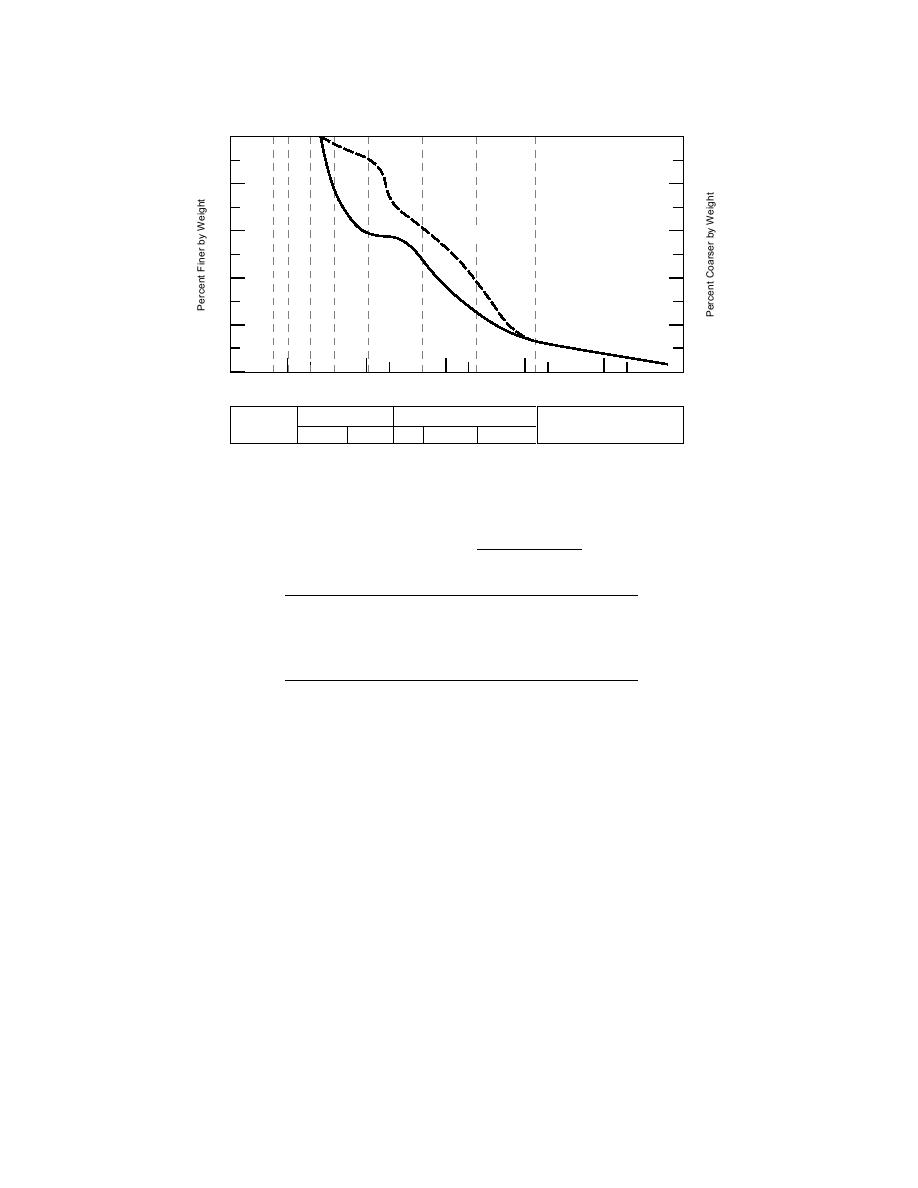
U.S. Standard Sieve Numbers
Hydrometer
6" 4"
2"
1"
10
40
200
3/8"
100
0
80
20
60
40
Subbase
Base
40
60
20
80
100
0
100
10
1
0.1
0.01
0.001
Grain Size (mm)
Gravel
Sand
Cobbles
Silt or Clay
Coarse
Fine
C'rse
Medium
Fine
Figure 18. Grain size distribution of base and subbase under Taxiway A, Albany County
Airport, New York.
Table 15. Change in CBR during thaw-weakening period.
CBR
Percent
Thaw-
passing
weakening Percent
Layer
USCS
no. 200 sieve
Normal
period
reduction
Subbase
GM
1020
64
33
48
Base
GM-SM
37
27
27
Base
GC
612
37
14
62
Base
GW
58
28
52
Base
GW
24
21
13
ties for mechanistic design. There are very limited
tensile strength, shear strength and, if elastic theory
data on the engineering properties (required for
is used, the resilient properties of stabilized soils are
mechanistic design) of stabilized soils subjected to
needed.
freezethaw cycling. Laughlin (1984) in his review
Whether this statement applies to airport pave-
reported that these soils undergo large volume
ments is a question. Thompson (1969b) also con-
changes when subjected to changes in tempera-
cluded that the material was weakest during the
first spring thaw after construction. He expected
ture and moisture, with moisture being the more
the material to continue to cure and increase in
critical factor. Volume changes can lead to crack-
strength during the following summer and fall.
ing of stabilized layers. Others, like Yoder and
Brandl (1981) reported that after 1 to 2 years, the
Witczak (1975), suggest that freezethaw cycling
may actually be destructive to lime-treated soils.
strength became fairly constant and that, after 7
Thompson (1969b) reported that the strength of
years, there was no change.
lime-treated soils is reduced when subjected to
Kettle and McCabe (1985) presented some data
freezethaw cycles (Fig. 19). Strength is usually
on the freezethaw resilient modulus and tensile
obtained from unconfined compression tests.
strength of cement-treated soils. The soils tested
There is about a 69-kPa (10-lb/in.2) loss per
ranged from a dense graded stone to silty clays.
The gradations of the soils tested are shown in Fig-
freezethaw cycle. However, Thompson believes
that, although there is a strength loss, the residual
ure 20. Unfortunately, none of these gradations fall
strength of the lime-treated soil after freezethaw
within the P-304 or P-306 gradation limits. How-
cycling is high enough for roadway pavements. For
ever, the results are useful for P-301 soilcement
performance analysis, the unconfined strength, the
base course. The soils were blended with portland
22



 Previous Page
Previous Page
